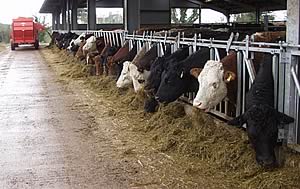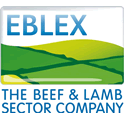 |
|||||||||
|
|||||||||||||||||||
|
|
Major
Challenge for Fledgling Cull Cow Market
The fledgling cull cow market has been establishing itself encouragingly
across the country since the November OTM rule change with little
of the feared disruption to prime cattle prices, reports the English
Beef and Lamb Executive (EBLEX). However, it warns that the ending
of the OTMS later this month poses a major challenge for the entire
beef market. Meat and Livestock Commission price reporting from auction markets - through
which the majority of these stock have been traded so far - shows
average liveweight prices a good This welcome stability could be seriously threatened by the determination to see the OTM Scheme end by January 22, unless there is a significant surge in demand seen for British manufacturing beef over Irish imports from the leading multiple retailers and foodservice organisations. The OTMS will be replaced by the Older Cattle Disposal Scheme (OCDS), to which entry will be restricted to animals born before August 1996. OCDS throughputs may well be fairly low in its early stages given the extent to which producers seem likely to dispose of animals born before August 1996 ahead of the ending of OTMS to take advantage of its weight-based payments rather than the OCDS headage rate which may be less favourable for most. Accompanied by the seasonal decline in cow disposals normally seen at this time, this should limit the influx of over 30-month cattle entering the human food chain in late January and early February. Nevertheless, from next month the industry could well be facing up to 14,000 more animals in the food chain every week - equivalent to around 4,000 tonnes of beef - very much higher than the current cull cow beef production figure of around 930 tonnes/week. The short-term pressure will not be helped by the fact that current EU processes mean the export ban on bone-in beef is unlikely to be lifted until March 2006 at the very earliest, meaning that normal beef exports may not resume before spring. Under these circumstances, EBLEX advises English dairy and beef herds to market their cull cows with particular care in the coming few weeks, achieving the best possible finish on them and ensuring as many as possible meet the required beef assurance standards to maximise both their suitability and marketability for human food. |
||||||||||||||||||

|
|
||||||||||||||||||
| home | agri-services | pedigree
pen | news | dairy | beef | machinery property | organisations | site map |
|||||||||||||||||||

